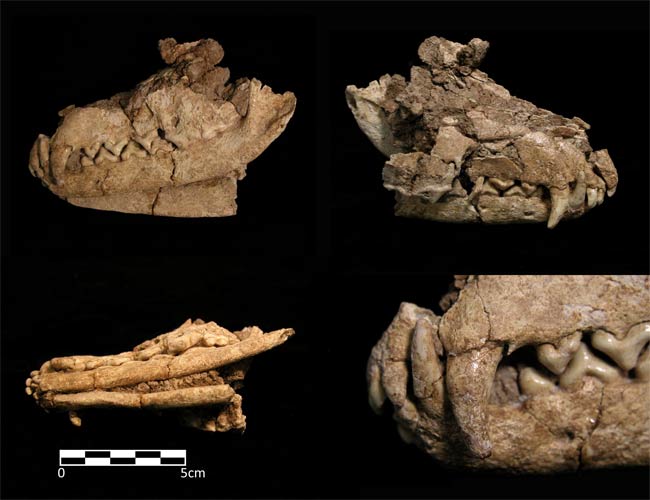Prehistoric Cemetery Reveals Man and Fox Were Pals

Before dog was man's best friend, we might have kept foxes as pets, even bringing them with us into our graves, scientists now say.
This discovery, made in a prehistoric cemetery in the Middle East, could shed light on the nature and timing of newly developing relationships between people and beasts before animals were first domesticated. It also hints that key aspects of ancient practices surrounding death might have originated earlier than before thought.
The ancient graveyard known as 'Uyun al-Hammam, or "spring of the pigeon," was discovered in the small river valley of Wadi Ziqlab in northern Jordan in 2000 and named after a nearby freshwater spring. The burial ground is about 16,500 years old, meaning it dates back to just before the emergence of the Natufian culture, in which pioneers used wild cereals (such as wheat, barley and oats) in a practice that would eventually evolve into true farming. These communities dwelled 11,600 to 14,500 years ago in the Levant, the area that today includes Israel, Palestine, Jordan, Lebanon and Syria.
The Natufian culture was known to bury people with dogs. One case discovered in past excavations in the area involved a woman buried with her hand on a puppy, while another included three humans buried with two dogs along with tortoise shells. However, the new discovery at 'Uyun al-Hammam shows that some of these practices took place earlier with a different doglike animal, the fox.
At least 11 people were buried at the site in Jordan, most of whom were found with artifacts such as stone tools, a bone spoon and bone dagger, and red ochre, an iron mineral. One grave held the skull and upper right arm bone of a red fox, with red ochre stuck on its skull, along with bones of deer, gazelle, tortoises and wild cattle. A neighboring grave with human remains also contained the nearly complete skeleton of a red fox, missing its skull and upper right arm bone, suggesting that a single fox had parts of it moved from one grave to another in prehistoric times.
"What we appear to have found is a case where a fox was killed and buried with its owner," said researcher Lisa Maher, a prehistoric archaeologist at the University of Cambridge in England. "Later, the grave was reopened for some reason and the human's body was moved, but because the link between the fox and the human had been significant, the fox was moved as well."
The fact that the fox was reburied with the human could mean the animal was once seen as a companion. The researchers suggest its bones may have been moved so the dead person would continue to have the fox as a comrade in the afterlife.
Sign up for the Live Science daily newsletter now
Get the world’s most fascinating discoveries delivered straight to your inbox.
"The fox was treated in a special way from any other animals at the site," Maher told LiveScience. "We think that this represents a significant social relationship, something that clearly goes far beyond the domestication of animals as livestock."
Although foxes are relatively easy to tame, domesticating them might have failed because of their skittish and timid nature. This might explain why dogs ultimately achieved "man's best friend " status instead. However, fox symbolism and fox remains are quite common in later Stone Age sites, both in domestic and burial contexts, "so even when other animals were domesticated, prehistoric people maintained an interest in the fox," Maher said.
The graves at the Jordan site do contain the remains of other kinds of animals, so "we can only take the fox-dog analogy so far," said researcher Edward Banning at the University of Toronto.
The notion that foxes served as pets happens to fit with modern preconceptions about human-dog relationships, and is just one possible explanation among many — for instance, it could have had some spiritual meaning instead, Maher said. Also, foxes did not always receive special treatment — other fox bones at the site bore signs of butchery and cooking, suggesting they were eaten for meat.
In any case, the findings reveal these burial practices and even the use of cemeteries go back further in time than previously thought.
"The repeated use of a particular location for the burial of the dead suggests that the people had a special connection to this site," Maher said. "Perhaps having a nearby place to return to and visit your ancestors or loved ones was as important in prehistory as it is in many cultures today."
The scientists detailed their findings in the Jan. 26 issue of the journal PLoS ONE.
You can follow LiveScience on Twitter @livescience.

Why is yawning contagious?
Scientific consensus shows race is a human invention, not biological reality









